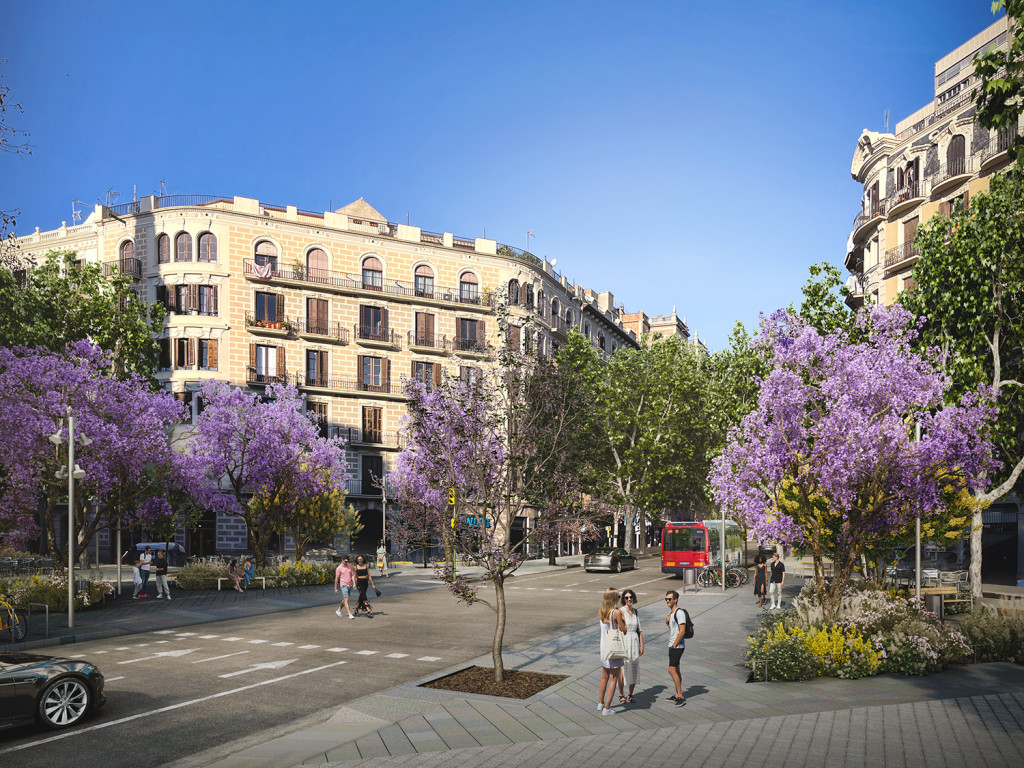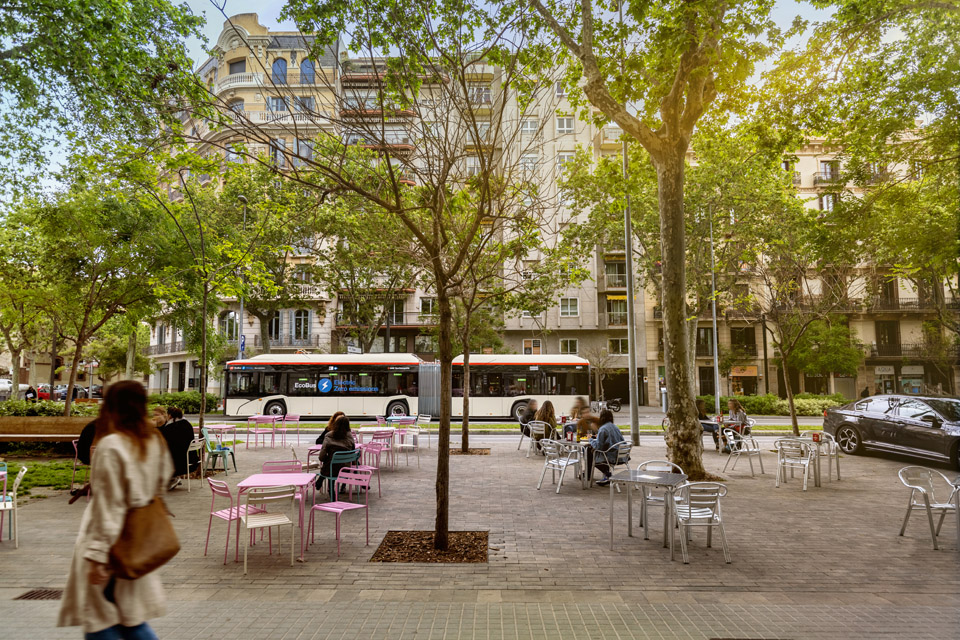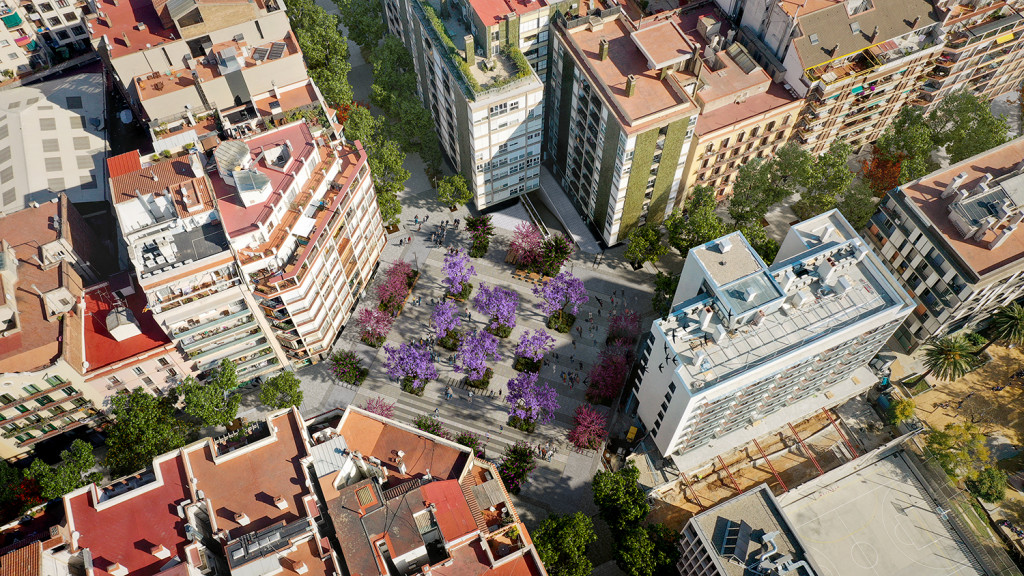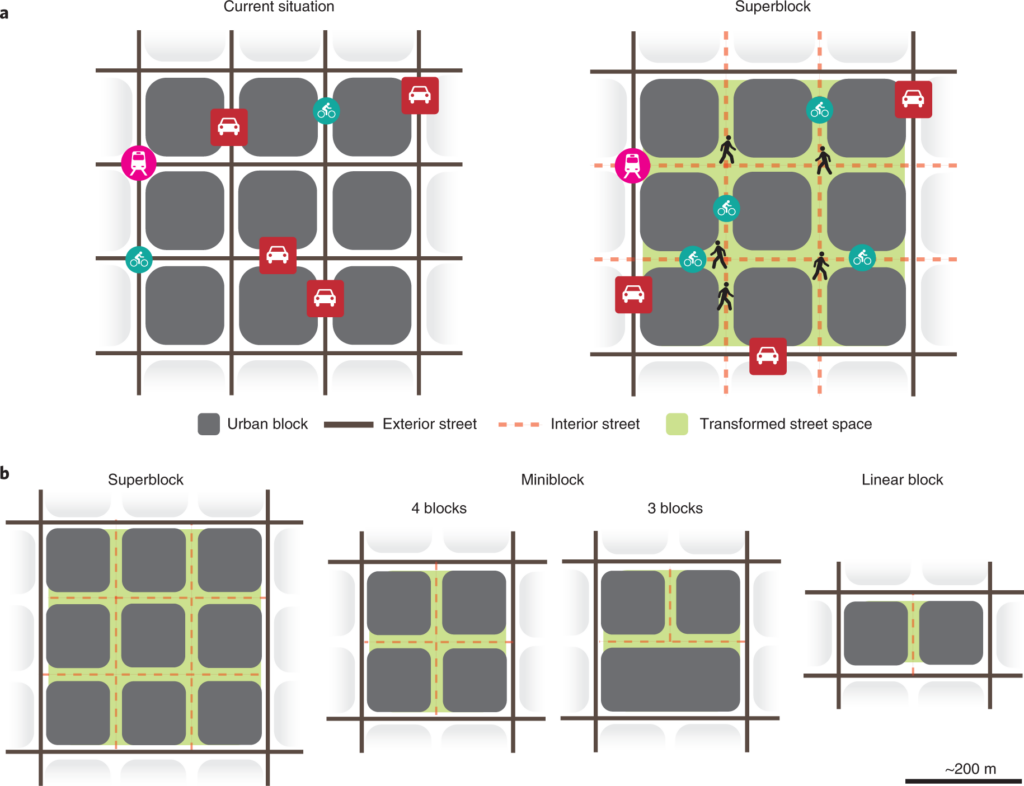Bus Rapid Transit in Denmark: Aalborg
BRT in Aalborg: the city's solution for enhancing urban transport – what makes it so effective?

Building a better city
– superblocks in Barcelona
By 2050, 68% of the world’s population will live in cities. We need solutions that redefine urban mobility and development strategy to prepare well for this. What are the views of Europe’s major cities? Today we will look at Barcelona and the ‘superblock’ model.
A city with clean air and a good communications infrastructure, where sustainable public transport is a priority, with dedicated bus lanes and an even more significant number of kilometres of cycle routes. Barcelona is clearly committed to promoting sustainable and healthy ways of getting around. Today, according to official city figures, 85% of journeys are made by public transport, bicycle, or on foot. One of the reasons for this impressive statistic is the Superblock programme, which has been in place for several years.

The basic concept of a superblock is simple: within a grid of streets three blocks wide and three blocks long (400m x 400m), traffic is restricted to residents. Motorised traffic is restricted to the streets surrounding the superblocks. The streets within the superblock become the neighbourhood’s public squares, and the few cars that are allowed to enter do so at a speed of 10 km/h, giving way to pedestrians. This creates a healthy, green, and safe public space that also engages the local community.
“Our computer simulations show that it would be enough to remove 15% of the cars from Barcelona to reclaim 60% of the public space,” says Salvador Rueda, the mastermind behind the superblock idea. “At the heart of the superblock model is the transformation of urban mobility. To meet this challenge, cities need efficient public transport combined with extensive cycling and walking infrastructure”.
LINK TO THE INTERVIEW WITH SALVADOR RUEDĄ:
Blueprint for the Green City of the Future? Interview with Salvador Rueda.
The challenge is daunting because, historically, the focus of urban design has been on motorised transport for decades. Today, 60% of public space is dedicated to cars, and more than a million cars pass through the city every day.

The superblock model changes this dynamic. It gives priority to pedestrians, who should be accommodated by sustainable transport such as trains, metros, buses, trams, or bicycles. It is also an ambitious plan to introduce a rule that residents must be within 200 metres of the nearest green space. The city’s mayor, Ada Calou, has announced that by 2026 every street in the central Eixample district will be at least 80% shaded by trees and 20% unpaved. This is a significant change in approach in terms of respect for the environment and response to the effects of climate change.
The idea seemed controversial when Barcelona began implementing the new ‘superblocks’ in 2016. However, the underlying idea has proved successful: as traffic was minimised, pollution and contamination disappeared. The green spaces helped mitigate the city’s ‘heat island’ effect. Young children finally had a place to play. Former traffic lanes became parks. The Superblock programme quickly evolved into the Superblock Barcelona programme – with a street transformation model for the whole city, aiming for one in three streets to be ‘green’ by 2030 (link to the official city website featuring project details).

According to the city’s deputy mayor, Janet Sanz, there have been real improvements in pollution and noise levels in places where superblocks have been introduced. In Sant Antoni, for example, levels of atmospheric pollutants such as NO2 have fallen by 25%, while in Glòries, noise levels have dropped by 9 decibels). All of this has happened while local businesses have seen their turnover increase and the number of cars in the Superblock area and adjacent streets has decreased.
Can Barcelona’s radical urban experiment be more than one city’s strategy and provide a one-size-fits-all solution for others? Nature Sustainability recently published a study detailing how a similar project could work in other cities equally challenged by the need to reorganise urban space.
“I think the biggest potential of superblocks is that they offer a vision for urban transformation that is not car-centric,” says Sven Eggimann, an urban infrastructure researcher at the Swiss research institute Empa, who authored the study.
Eggimann used an algorithm to analyse the potential of superblocks – or a smaller version of the concept he calls “miniblocks” – in more than a dozen other cities, looking at both traffic flow and population density in each neighbourhood.

The study showed that some other cities with similar structures could easily adopt a similar model. As an example, Eggimann cited Mexico City, where more than 40% of the city could be converted to superblocks with very little disruption to the existing transport system. The study also showed that superblocks are feasible in cities such as Tokyo, which does not have a regular network but is densely populated. In this case, efficient public transport is essential. “The superblock model is particularly interesting because it envisages large-scale change, going beyond the transformation of a single street, and this is where I see its greatest potential,” says Eggimann.
READ THE ENTIRE DOCUMENT:
The potential of implementing superblocks for multifunctional street use in cities,
Sven Eggimann, Nature sustainability.
Changing the approach to environmental sustainability in urban areas is more than just a fad. The increasingly visible effects of climate change are prompting city authorities to make long-term adjustments. The Superblock project in Barcelona is an excellent example of redefining urban mobility. Explore ideas from other cities, such as Tallinn.
BRT in Aalborg: the city's solution for enhancing urban transport – what makes it so effective?
Milan is entering a new phase in the integration of digital technologies into urban spaces.
Interview with Krzysztof Dostatni, CEO of MPK Poznań.